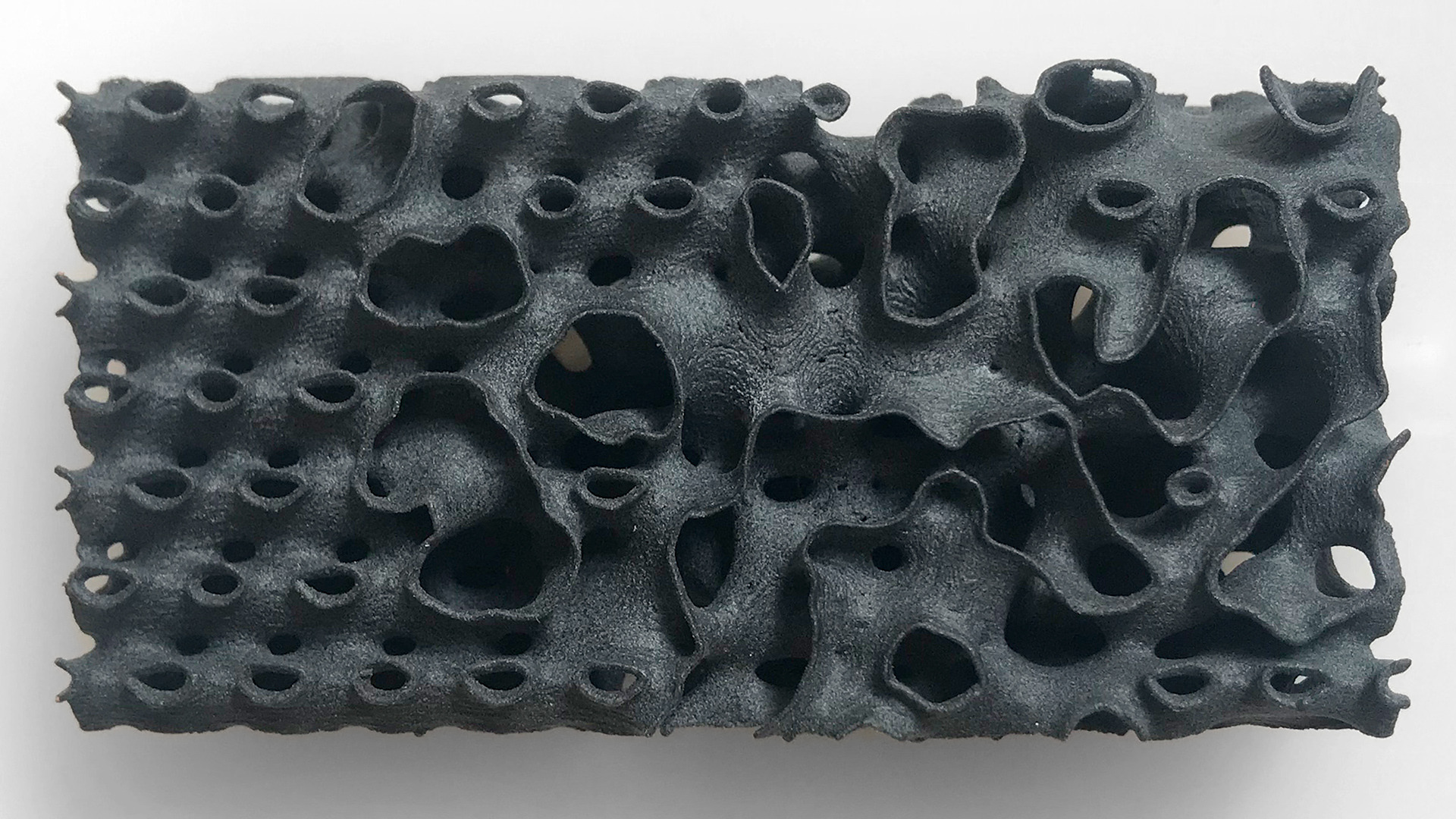Triply Periodic Minimal Surfaces TPMS are geometries ideal for the distribution and dispersion of loads, and hence allow for the design of lightweight, load-bearing components. The advent of metal Additive Manufacturing AM brought a paradigm shift to the design & production of spacecraft components: a complex part incorporating multiple functions is now cheaper than a simple assembly. In this light, TPMS have seen increased use, mostly as infill structures based on cubic unit cells, in some cases distorted to accommodate bounding geometry. Following our find of the previously unknown Quasi-Periodic Minimal Surfaces QPMS we discovered the Adaptive Density Minimal Surfaces ADMS, when extending our QPMS method to include the local adaptation of the generating parameters to inputs such as load, shape or scale, thus adding configurability — which is what differentiates ADMS from the TPMS currently used. ADMS allow for the design of AM objects which are optimized towards input parameters and boundary conditions such as load case, shape, scale, porosity, etc. While such objects provide an optimal weight-to-performance ratio, use minimal material and thus optimize build time & cost — they also enable support-free SLM metal printing, significantly reducing post processing — and they contain two interleaved, equally-sized labyrinths allowing for applications such as insulation, storage or heat exchange. For example, ADMS can be used to design a lightweight satellite chassis which is not only optimized towards stiffness and attenuation, but which also contains, inherent to its structure, an all-encompassing two-chamber system that can serve as thermal piping to mitigate the stresses generated by the temperature gradients between sunlit and shadowed areas of the satellite. Our aim here is to develop our ADMS configurator into a design tool equipped with mechanical, thermal, oscillations and possibly flow input plugins, allowing for space applications to be tested and implemented.

